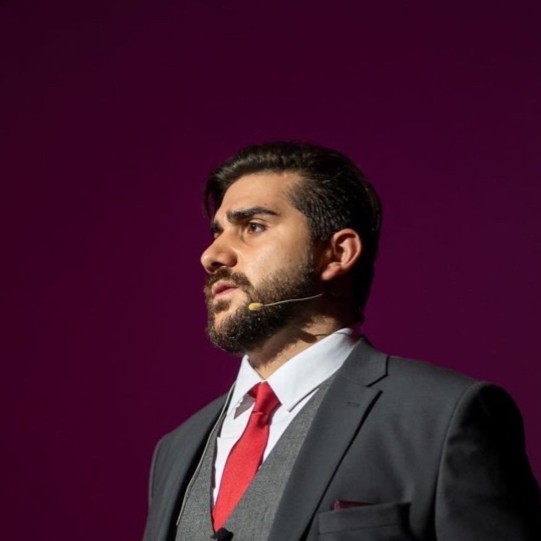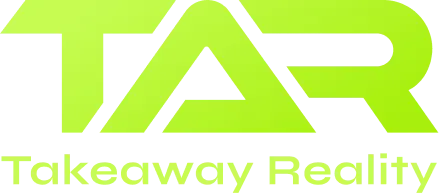Virtual Reality

Take a look at how VR for events can improve your presence and ROI at conferences, trade shows and conferences. Virtual Reality is the next step in event marketing.
Table of contents
Key Takeaways
VR for events can deliver high ROI – In one trade show activation, a $8k investment resulted in an impressive 140% return within just three months.
Immersive experiences drive real engagement – VR captures attention, creates emotional impact, and encourages deeper interaction with your brand.
The value extends beyond the event – VR content can be repurposed for sales demos, marketing campaigns, and long-term brand engagement.
Strategic implementation is key – Success with VR for events depends on thoughtful storytelling, user-friendly design, and measurable goals.
Background
How VR for Events Can Deliver a 140% ROI—and Why It’s Just the Beginning
In today’s increasingly digital and hybrid event landscape, brands are under pressure to stand out, engage, and convert. Traditional booth designs and branded merchandise can only go so far. What truly captivates attendees, builds excitement, and generates results is immersive storytelling, and nothing does that better than VR for events.
Our recent experience at a major trade show proves just how powerful virtual reality can be when thoughtfully implemented into your event strategy. Not only did our VR activation attract considerable attention, but it also converted eight qualified leads within the span of just a few days. Within three months of that event, we achieved a return on investment (ROI) of 140%. And that’s just the start.
In this article, we’ll break down what made the campaign so successful, how much it really costs to implement VR for events, and why this technology is no longer a “nice-to-have” but a strategic advantage.
The Activation: Engaging Attendees Through Immersion
Trade shows are often crowded, noisy, and competitive environments where companies are fighting for a few seconds of a prospect’s attention. That’s why we knew we had to offer something radically different. We designed an interactive VR experience tailored to our client’s brand story, allowing users to step inside a virtual world where they could explore the company’s products and services in a fully immersive way.
The goal wasn’t just to entertain. It was to educate, emotionally connect, and leave a lasting impression. And it worked.
The booth saw a steady stream of foot traffic throughout the day, with many attendees lining up to try the VR experience for themselves. It created buzz, drew interest from industry journalists, and—most importantly—sparked meaningful conversations with potential clients.
Project
Why VR for Events Works
There’s a reason VR for events is becoming a go-to tactic for innovative marketers and event planners. Here are a few reasons why it’s so effective:
1. It Cuts Through the Noise
Attendees at expos, conferences, and trade shows are bombarded with marketing materials and repetitive pitches. VR is still novel enough to grab attention—and immersive enough to hold it. Instead of being talked at, visitors get to interact directly with your brand.
2. It Drives Emotional Connection
VR isn’t just a visual medium—it’s an emotional one. The sense of presence and engagement makes it easier for users to internalize your message. When they leave your booth, they remember how it felt—not just what they saw.
3. It Delivers Rich Data
Beyond the wow factor, VR experiences can be instrumented to track user behavior—what people clicked on, how long they engaged, and what features they explored. This kind of insight is gold for follow-up conversations.
4. It Enhances Brand Perception
Using VR signals innovation, forward-thinking, and commitment to experience design. It sets a tone for your brand as one that embraces modern tools and creates value in unconventional ways.
Is VR Right for Your Next Event?
The short answer is: very likely, yes.
If your goals include attracting attention, driving engagement, generating leads, or positioning your brand as innovative, VR for events is worth considering. That said, it’s not about throwing tech into the mix for the sake of novelty. A great VR activation requires alignment with your brand message, clear user flow, and measurable outcomes.
Here are a few signs VR might be a good fit for your next event:
You’re launching a new product or service that’s hard to explain through words or slides
You’re in a crowded industry where differentiation is key
You want to collect meaningful insights from attendee interactions
You aim to generate long-term ROI—not just one-time impressions
What Makes a Great VR Event Experience?
To make your VR event experience successful, follow a few best practices:
1. Start with the story
Think about the emotion, transformation, or “aha moment” you want users to walk away with. Start with narrative, not just visuals.
2. Design for flow
People have short attention spans—especially at events. Keep the experience short (2–4 minutes), intuitive, and accessible to all.
3. Make it measurable
Set clear goals for engagement, lead capture, and outcomes. Build in analytics to understand what worked—and what didn’t.
4. Have support on-site
Always have staff trained to guide users through the VR experience. Technical hiccups or poor instructions can ruin even the best-designed content.
How much does it cost?
Breaking Down the Costs
When discussing VR for events, one of the first questions people ask is: “How much does it cost?”
Throughout our work with major brands, we have created a library of simple and fun gamified experiences that have proven to be a big draw at events. If you choose one of these experiences, your costs can be as low
Generally, a high-quality, branded VR activation ranges between $7,000 and $10,000 USD for a mid-sized trade show, including the build, setup, and technical support. While this may seem steep compared to traditional displays, the engagement level and lead quality far surpass what you'd get from passive banners or flyers.
When you consider a potential ROI of 140% or higher as we saw in our own campaign—the investment makes a compelling case.
Results
What we did: Our activation
In July last year we visited a marketing conference in London and had our booth there. For this occasion, we wanted to bring in as many people as possible to our booth and showcase how both AR and VR can be used to achieve this.
As we like to gamify everything, we made it a game! We ordered customized scented candles. Half of which would be vanilla - the scent everyone got just for participating. The other half of the candles would be split equally among our five special scents that you can only get by playing our VR experience.
The VR experience worked so that you would spin a VR wheel and see which candle you received.
Once you got your candle, you were in for another surprise. On the candles there was a QR code that allowed your candle to “come to life” through Augmented Reality.
The Results: Measurable ROI in 90 Days
Compared to a the same event last year, (when we did not use a VR activation), we received 73% more visitors.
Their engagement time was also much longer, although we did not measure this.
From that single event, our VR booth activation generated 12 high-quality leads. These weren’t just casual inquiries. They were businesses that entered the sales pipeline and converted into paid projects—enough to recoup our investment several times over.
The cost of delivering the VR activation—design, development, hardware, and on-site support—was roughly 8,000 USD, depending on the complexity of the experience. In our case, the spend landed in the middle of that range. And in just three months, the revenue generated was 19,200 USD resulting in a 140% ROI.
The most exciting part? That number only reflects the initial sales. Several of the clients we converted at the trade show have since come back for additional work. These second-order projects are a testament to the long-term value of VR for events—not just as a lead generation tool, but as a catalyst for lasting client relationships.
Future Outlook: VR for Events in 2025 and Beyond
The demand for VR for events is only going to grow. With improvements in headset accessibility, 5G connectivity, and WebXR technologies, it’s becoming easier and more cost-effective to deliver immersive experiences at scale.
We're already seeing major industries—from automotive to real estate to education—using VR to tell richer stories, offer virtual test drives, or walk clients through digital showrooms. As more people become comfortable with the technology, expectations will shift. The booths that draw the most attention won’t be the loudest—they’ll be the most immersive.
This success motivated us to create a dedicated VR for events platform which you can check out on this link.
Frequently Asked Questions
Is there something related to this case study on your mind? Take a look at some of the questions we think might interest you!
Can't find the question you are looking for?
Send us a message and we'll get back to you as soon as possible!
Send us a message and expect our reply as soon as possible!




